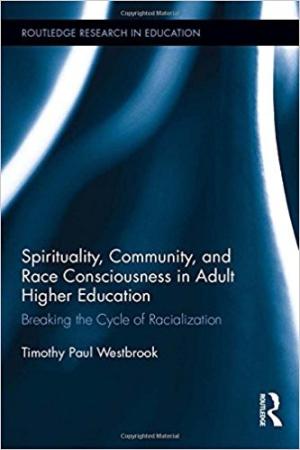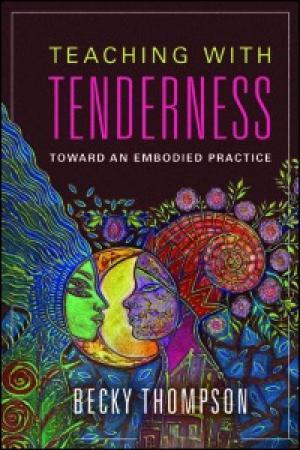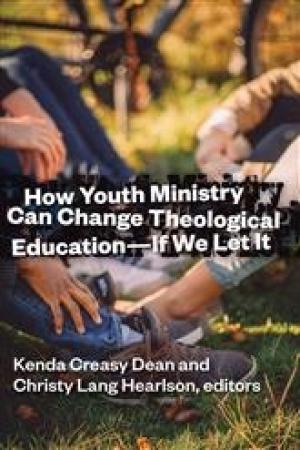Resources by Sunder John Boopalan

Drawing on the lived experiences of Black students in adult degree completion programs at predominantly White, Christian institutions in the southern United States, this book presents a model for reimagining adult higher education. Westbrook explores the reasons students enrolled in degree programs, how they experience their predominantly white institutions, and how their experiences affect their lives. Employing Critical Race Theory and Christian theology as frameworks for evaluating the students’ experiences, the author sheds light on the ways African American experiences to inform, critique, and shape Christian adult learning in higher education. (From the Publisher)

Antagonisms, conflicts, and oppositions characterize societal relations. Becky Thompson acknowledges these realities throughout her book with careful attention and still makes the case for a post-oppositional approach. This is the book’s greatest strength, offering hope and healing through tenderness while walking through the ruin and devastation brought about by dominating power and systems of inequality. Thompson asks, “What rituals might we incorporate into teaching that invite the body into the classroom? What is it about the structure of academe that leads us to flee our bodies? How can we find them again? What risks will this take? What truths do we need to tell about our lives and our teaching that we have been hiding from ourselves, or barely whispering? How might inviting bodies into the classroom change how we seek justice in the world?” (13). Thompson responds to each of these questions by leading readers through an interdisciplinary and innovative collection of figures and concepts without sacrificing the book’s rigor. Given the hardening of boundaries and identities in discussions about power and privilege, Thompson’s work brings a refreshing proposal and argument for countering defensiveness and getting to “a soft place with each other” (36). For teachers of all stripes, this means overcoming a dichotomy between mind and body often inherited and passed along in the academe (64). Making a case for “embodied pedagogy” (39), Thompson lifts up the very essential need to facilitate a “resocialization process” (88) whereby students are enabled to feel connected with each other and themselves. Teaching with Tenderness is exceptional because it does not offer easy solutions. For instance, Thompson notes the difficulty of inviting in people’s personal stories “without encouraging an atmosphere where students feel they must share in order to succeed” (72). For teachers untrained in professional therapeutic strategies, overcoming the desire to “outsource the emotional content of our courses” (89) takes soul work and the willingness to deal with the messiness of what Thompson memorably refers to as “the warp and woof” of that which makes us all human (90). The book also offers an implicit challenge to teachers, scholars, and researchers for whom gathering data, research, and analysis is part of their bread and butter. While recognizing these as necessary, Thompson notes that academics need to conduct research “with” and not “on” the communities they are describing or analyzing (108). Thompson’s work speaks to those interested in carving out a new path in teaching and learning where there is neither exclusion nor appropriation, neither denial nor naiveté, neither easy solutions nor pages filled with jargon. This book is a must-read for anyone interested in the challenge and promise of interdisciplinary work that takes the whole person into account as part of envisioning a pedagogy where all things are done as if everyone mattered – body, mind, and all.

If a title reflects a book’s content, then this work is a particularly good case in point. The authors consistently refer to various real-life examples from the sphere of education in order to highlight the importance of attitudes and dispositions. While thus staying true to the book’s title, the authors additionally share pieces of wisdom from the field informed by years of experience. Education is a service industry. Educators and trainees are called to serve and not to be served. While this may seem like commonsense, the authors remind readers that commonsense is not all that common and the problem of entitlement is not as uncommon as one would like it to be (26). In this light, the authors make the case for the assessment of dispositions along with accompanying narratives that will address the issue in a professional and timely manner (38). While offering critical feedback, however, coordinators and instructors are simultaneously encouraged to keep in mind the need for reassurance, support, and empathy for students who are teacher candidates. The book is filled with humor, allowing readers to let their guards down a little and see the need for inculcating professionalism in work settings. The authors narrate accounts of students in training who cite seemingly legitimate reasons for absences only to be caught – thanks to social media – going on cruises. The authors offer other cases, such as those who try to outmaneuver school buses pulling out of parking lots just to get ahead. Then, believe it or not, are those who speak inappropriately to students, including saying, “You don’t like my jacket? Well, your momma liked it last night” (42). Working with future educators, the authors argue rightly, necessitates being proactive. While entitlement and lack of professionalism are matters of utmost concern when working with teacher candidates who are adults, these very adults also have particular lives that bring up questions of shelter, work-school balance, adequate food, parenting and other familial responsibilities. “Can you be proactive? Yes! Should you be proactive? Yes! Does it take time? Yes! Does it take work? Yes! Is it worth it? Absolutely!” (47). Through such series of questions and responses, the book presents a wealth of material in a readily accessible manner to teacher educators. Educators are warned that perfectionism may come at the cost of unsustainable superficiality. Reminding educators that “we are they,” the authors note that “what we create together will ultimately serve our students, schools, and communities” (55). The emphasis on creating together means that authentic, professional, and healthy relationships and partnerships are acknowledged as being at the heart of a successful field education experience (55). Such relationships and partnerships need constant tending and care, much like a garden (54-55). As readers make their way through the book, a realization soon emerges. Transcending the this-is-my-obligation attitude in order to come to a place where “we make promises and keep them” (59) is key. Commitment, talent, and care for the educational setting are tested by problems, dispositions, and attitudes (77). Anyone interested in navigating these realities would benefit from engaging this work.

Acutely aware of the North American religious landscape, the editors introduce the volume by noting two ironies – a vast majority of young people subscribe to a superficial understanding of self, God, and the world, and those who are more complexly informed are often mistakenly considered by youth ministries to be “already won” (8). With this awareness, the editors bring together a diverse set of essays that intentionally make an effort to overcome this irony. By making critical references to High School Theology Programs, the different authors weigh in on the matter by treating high school students as full persons who desire and invite serious mentorship, challenge conventionally held notions, and are ready to hit the spiritual formation ball out of the park. Several authors highlight how young people are often liturgically formed by dominant social conventions that impact their behavior and their ability to articulate the meaning of self and world. If young people are thus culturally tutored, how can those in youth ministry enable a different way of theologically framing lived experiences? How can they creatively disrupt unhelpful naming systems, for example, that young people are enculturated into in such a way that naming the issue could become a means to rethink and rename ways of being in the world? What would this take and what would it cost? Each author presents arguments and perspectival interventions that are based on hard evidence and long-term work with high school students. Work with youth, in the end, affects youth and those who work with them. The book argues that such giving and receiving offers grounds for holy friendship and mutual companionship that can and will positively change self and world. Faculty members in theological schools are encouraged to actively seek out for themselves and others opportunities to teach age groups that they may not otherwise readily engage. No age is “too young.” While the difficulty of the task is not underestimated, the rewards, the authors argue, are many. Church workers are called to focus not so much on saving churches but rather on “saving lives” (275). Both may eventually be saved in the process. The subtitle “If We Let It” captures the philosophical framework of this book. Readers interested in learning how youth ministry can change theological education – if we let it – will learn a great deal from this work that serves as a well-researched handbook, an indictment of theological malnourishment, and a mirror that poses hard and important questions to those interested in more than a cosmetic makeover of theological education today.